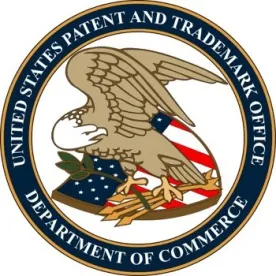The U.S. Patent and Trademark Office has released a summary of the Trademark Modernization Act of 2020 (the “TMA”), which enacted significant changes to trademark law and was part of the Consolidated Appropriations Act of 2021 that was signed into law on December 27, 2020. The TMA clarifies the burden for trademark owners seeking injunctive relief, and implements new mechanisms for challenging applications and registrations on non-use grounds. The USPTO’s summary is available here, and the full text of the TMA is available here. Several of the TMA’s key reforms are highlighted below.
Revival of the Rebuttable Presumption of Irreparable Harm
Historically, trademark owners seeking injunctive relief were afforded a presumption of irreparable harm upon a showing of likelihood of confusion. That changed after the Supreme Court held in a 2006 patent infringement case, eBay, Inc. v. MercExchange, that a plaintiff must prove irreparable harm to get injunctive relief. Following eBay, a circuit split developed as to whether a presumption of irreparable harm still applies in trademark cases, with several circuit courts holding that it does not and other circuit and district courts continuing to apply the presumption.
The TMA resolves this split once and for all. Specifically, the TMA amends Section 34(a) of the Lanham Act (15 U.S.C. § 1116(a)) to clarify that a rebuttable presumption of irreparable harm applies upon a finding of infringement in the permanent injunction context, or upon a finding of likelihood of success on the merits in the context of preliminary injunctive relief. Because the TMA-amended provision applies to injunctive relief with respect to unfair competition, false advertising, dilution, or cyberpiracy claims brought under Section 43 of the Lanham Act in addition to trademark infringement claims, the rebuttable presumption also applies to such claims.
By codifying this rebuttable presumption in the Lanham Act, the TMA makes it easier for trademark owners to establish entitlement to injunctive relief, regardless of jurisdiction.
New Procedures for Review and Cancellation of Marks for Non-Use
In recent years, the USPTO has grown increasingly concerned about the proliferation of fraudulent or “deadwood” trademarks – registered marks that are not being used, or not being used for the goods or services named in the registration. The TMA helps address this problem by creating new mechanisms to challenge and cancel marks on the basis of non-use, and by adding non-use as a ground for cancellation. These new mechanisms represent a dramatic shift from the status quo.
First, the TMA amends the Lanham Act to add a new Section 16A (“Ex Parte Expungement”). The newly added Section 16A allows any person to petition to expunge a trademark registration on the ground that the mark was never used in commerce as is required for registration. A 16A petition can be filed beginning after three years from the date of registration, and no later than ten years after registration. However, the legislation includes a window during the first three years after enactment, during which even older marks can be challenged or expunged under these new procedures.
Second, the TMA also amends the Lanham Act to add a new Section 16B (“Ex Parte Reexamination”). Under the new Section 16B, any person can petition for reexamination of a registration on the ground that it was not properly used in commerce before the registration date. A 16B petition must be filed within 5 years of the registration’s issuance.
Under both procedures, the initiating party is required to submit to the Director of the USPTO evidence or testimony establishing a prima facie case of non-use. The new provisions also allow the Director of the USPTO to initiate a proceeding if the Director discovers information supporting a prima facie case of non-use.
In addition to the new ex parte reexamination and expungement procedures, the TMA also amends Section 14 of the Lanham Act to add non-use as a new ground for cancellation. Under the amended Section 14, a petition to cancel a registered mark may filed at any time after 3 years from the registration date on the ground that the mark has never been properly used in commerce, though a foreign or Madrid Protocol registration under Sections 44(e) or 66 shall not be cancelled on this new ground if the registrant can demonstrate that any nonuse is due to special circumstances that excuse such non-use.
These new procedures pertaining to non-use will take effect on December 27, 2021 (the first anniversary of the date the TMA became law).







 />i
/>i
